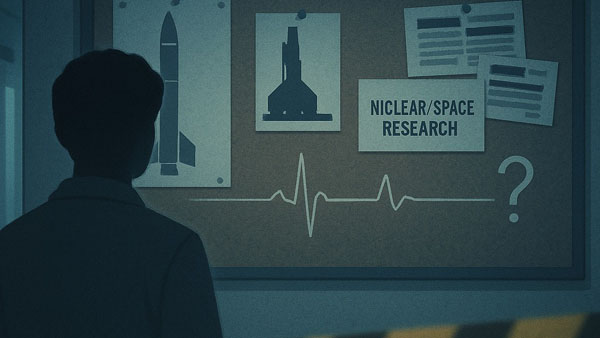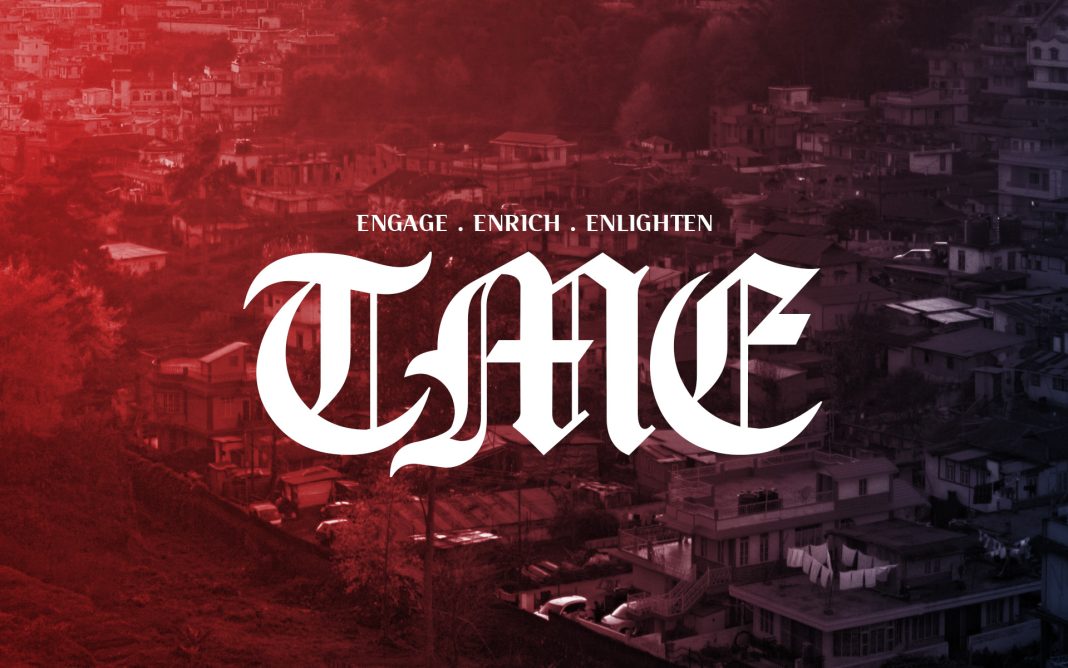By Satyabrat Borah
The mysterious deaths of Indian scientists have cast a long, unsettling shadow over the nation’s scientific community, raising questions that remain unanswered and fueling speculation about conspiracies, systemic failures, and hidden threats. The recent death of Akashdeep Gupta, a 30-year-old systems engineer working on the BrahMos missile project at the Defence Research and Development Organisation (DRDO) in Lucknow, has reignited these concerns. Found dead in his residence in October 2025, reportedly due to a sudden heart attack, Gupta’s passing adds to a disturbing pattern of unexplained deaths among India’s scientific elite. With no known health issues and a recent marriage just six months prior, his death has sparked suspicion, especially given the sensitive nature of his work. The police await a postmortem report, but the incident echoes a history of similar tragedies involving scientists from DRDO, the Indian Space Research Organisation (ISRO), and the Bhabha Atomic Research Centre (BARC). This article explores the historical context, statistical anomalies, possible causes, and broader implications of these mysterious deaths, delving into a complex web of intrigue that demands urgent attention.
The history of India’s nuclear and space programs is marred by incidents that suggest a targeted threat to its scientific community. In 1966, Homi J. Bhabha, the father of India’s nuclear program, perished in a plane crash near Mont Blanc. The lack of a conclusive investigation led to widespread speculation of foreign involvement, particularly from the United States and Pakistan, who were wary of India’s growing nuclear capabilities. Experts believe that had Bhabha lived, India’s nuclear program might have advanced far beyond its current state. Similarly, in 1971, Vikram Sarabhai, the architect of ISRO, died suddenly in a hotel room under unclear circumstances. No definitive evidence of health issues was ever confirmed, leaving his death shrouded in mystery. These early incidents set a troubling precedent, raising questions about the safety of scientists working on projects critical to national security.
In more recent decades, the frequency of such incidents has only increased, painting a grim picture. Between 1995 and 2010, ISRO and its affiliated units reported 684 employee deaths, many of which were labeled mysterious. Data obtained through the Right to Information (RTI) Act reveals that a significant number of these were scientists, with many cases officially classified as suicides. However, the suicide rate among these scientists far exceeds the national average of 3 percent, prompting skepticism. At BARC, from 1995 to 2014, 3,887 employees died due to health-related issues, with 70 percent attributed to cancer. This unusually high cancer rate has led to speculation about the long-term effects of radiation exposure in nuclear facilities. Additionally, 255 BARC employees reportedly took their own lives, citing chronic illnesses and family issues. DRDO has not been spared either, with cases like the 2014 murder of Uma Rao, initially dismissed as a personal dispute, adding to the tally of suspicious deaths.
The period between 2009 and 2013 is particularly alarming, with BARC reporting 11 mysterious deaths of scientists, seven of which were classified as suicides. Families and colleagues have consistently questioned these verdicts, pointing to inconsistencies. For instance, in 2009, two young researchers, Umang Singh and Partha Pratim Beg, died in a fire at BARC’s radiation and photochemistry lab. The absence of flammable materials in the lab raised doubts about the official narrative, yet no clear answers emerged. In 2010, Mahadevan Padmanabhan Iyer, a mechanical engineer, was found dead in his home with a noose around his neck. Initially ruled a suicide, the case was later reclassified as murder, but the perpetrator was never identified. That same year, two C-grade scientists were found hanged in their residences, both labeled as suicides. In 2011, Uma Narayana Rao, a retired scientist, was found dead in his home, with police claiming suicide despite objections from his family. In 2013, a scientist at the Kalpakkam nuclear facility drowned in the sea, officially deemed a suicide, though investigations remain inconclusive. Of these 11 deaths, eight involved scientists working in BARC’s laboratories, with causes ranging from explosions to hangings to drownings. Three scientists from the Nuclear Power Corporation also met similar fates, with two labeled suicides and one attributed to a road accident.
The explanations for these deaths often fall into two categories: workplace stress and health risks. Scientists in these high-stakes institutions face immense pressure. Long working hours, the burden of maintaining secrecy, and the expectation of delivering breakthroughs take a toll on mental health. Some scientists have left notes citing harassment by superiors as a reason for their actions, pointing to a toxic work environment. Health risks, particularly in nuclear facilities, are another factor. Prolonged exposure to radiation is linked to higher cancer rates, with BARC reporting 2,600 cancer-related deaths among its employees. Chemical exposure in labs may also contribute to other chronic illnesses. These explanations, while plausible, do not fully account for the sheer number of deaths or their suspicious circumstances.
Beyond these surface-level reasons lies a darker possibility: conspiracy. India’s nuclear and missile programs pose a threat to global powers, making its scientists potential targets. Speculation has long pointed to foreign intelligence agencies like Pakistan’s ISI, China’s secret services, or even the CIA. The assassination of Iranian nuclear scientists offers a parallel, suggesting that targeted killings are not unheard of in the geopolitical arena. In India, investigations into these deaths are often incomplete, with missing fingerprints or insufficient evidence leading to cases being closed as “unexplained.” DRDO has also faced security breaches, such as the 2018 arrest of a BrahMos engineer for allegedly leaking sensitive information to Pakistan through a honeytrap. Such incidents fuel fears that scientists are being targeted to sabotage India’s strategic advancements. The lack of transparency in these investigations only deepens public distrust, as critical details are withheld under the guise of national security.
The implications of these deaths extend beyond individual tragedies. Each loss represents a setback for India’s scientific progress and national security. Scientists like those at DRDO, ISRO, and BARC are not just employees; they are custodians of knowledge that drives India’s global standing. Losing them to unexplained circumstances risks derailing critical projects, from missile development to space exploration. Moreover, the fear of being targeted can deter young talent from pursuing careers in these fields, creating a chilling effect on innovation. The psychological toll on surviving scientists is also significant, as they work under the shadow of potential threats, whether from internal pressures or external enemies.
Addressing this crisis requires immediate action. First, the government must establish an independent task force to reinvestigate these deaths, ensuring transparency and accountability. A dedicated inquiry into the patterns and inconsistencies could uncover systemic issues or external interference. Second, the safety of scientists must be prioritized. This includes providing personal security for those working on sensitive projects, regular health screenings to mitigate occupational risks, and mental health support to address workplace stress. Counseling services and stress management programs could help alleviate the pressures that may push some toward extreme measures. Third, investigations must be made more transparent, with findings shared publicly to the extent possible without compromising national security. The current practice of closing cases as unexplained or hastily labeling them as suicides erodes trust and leaves room for speculation. As ISRO scientist Tapan Mishra revealed in a post, he survived two poisoning attempts, a claim that underscores the need for vigilance and openness.
The mysterious deaths of Indian scientists are a stain on the nation’s scientific legacy. They are not merely personal losses but attacks on India’s aspirations to be a global leader in science and technology. The government, scientific institutions, and civil society must work together to lift this shadow. Protecting the lives and well-being of scientists is not just a matter of justice but a necessity for safeguarding the nation’s future. Without decisive action, the fear of losing more brilliant minds to this enigma will persist, undermining India’s scientific ambitions and leaving its brightest talents vulnerable to an unseen enemy. The time to act is now, to ensure that those who dedicate their lives to advancing the nation can do so without fear, and that their contributions endure for generations to come.




